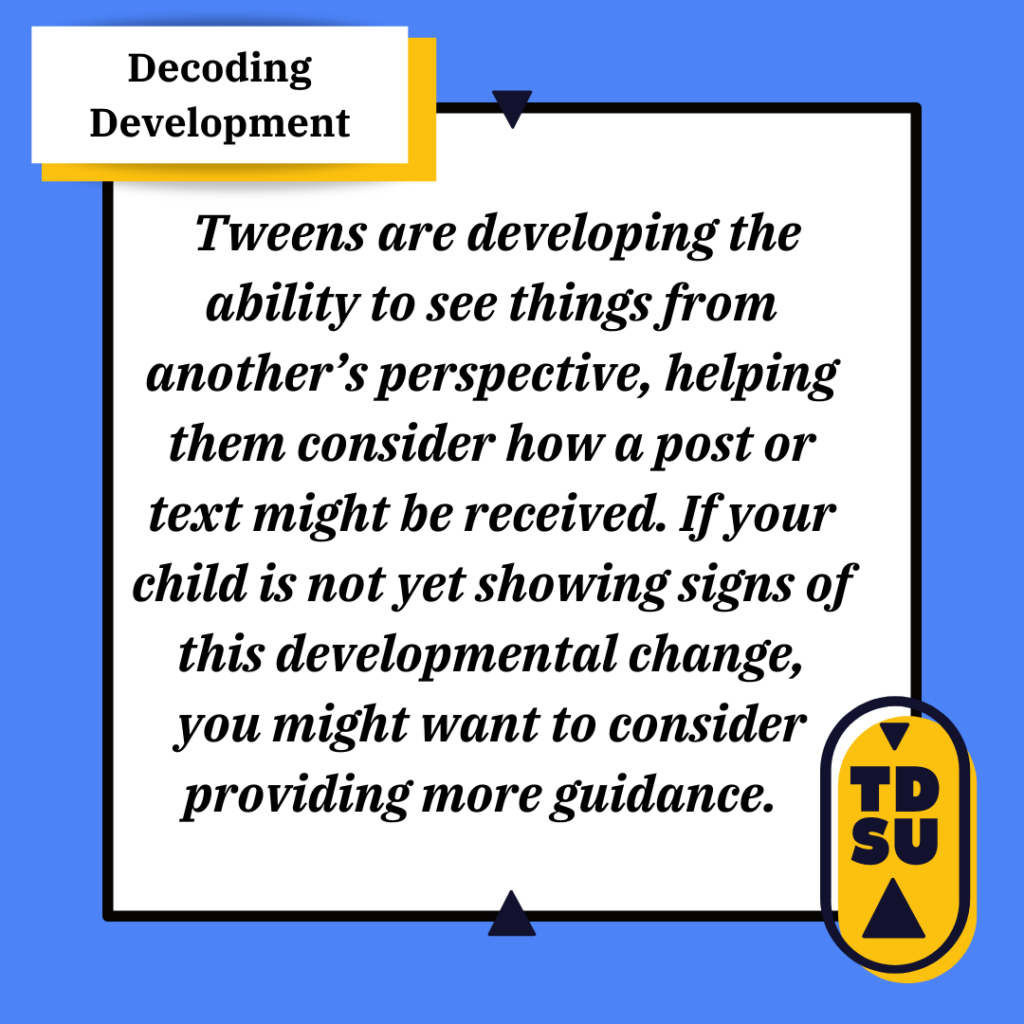Texts or posts that require tone, context, and knowledge of intention to make sense are what TDSU calls problematic.
Online written communication can become problematic in the absence of tone, context, and knowledge of intention because people have to make a host of assumptions about what they are reading or seeing. Words aren’t always enough.
How to explain to your tween why words aren’t always enough

Tone reveals the feelings behind the words. Tone can be conveyed in numerous ways. For example, “I don’t know” can mean any number of things depending on the tone of voice. Or, “That sounds great” has a totally different meaning if the person rolls their eyes while they say it.
Context helps to clarify meaning. Imagine you see an image of someone with pie all over their face and the word, “Winner!” written across the top. In the absence of context, you don’t know if this is meant to poke fun or to congratulate the winner of a pie eating contest.
If we know the intention behind what someone posts or texts, we may have more insight into what they hope our take-away is. This can frame the interaction in a way that might prevent misunderstandings or hurt feelings.
When your tween wants to send or post something, how can they try to compensate for the absence of tone, context, or knowledge of intention?
- Spell it out. If your tween can explicitly communicate what they are feeling, there is less chance of misunderstandings. This is where having a strong emotional vocabulary can be helpful. Check out our TDSU-Libs activity for a fun way to build this skill.
- Be wise and contextualize. If the images or words they are using require context, they should explain it.
- Put intention on display. If they think there might be confusion about the reasons behind what they are sending, they should let the person know their intention.
- Explain. Your tween can try to convey tone, context, and intention by using emojis, images, punctuation, capitalization, and message effects. However, we know these are imperfect because we cannot assume everybody uses them in the same way. One way your child can try to make themselves better understood is to explain their choices. For example, the first time they use an emoji with someone they might say, “I use this emoji when I’m being sarcastic.” If they elect to use all caps, they could say something like, “I’m using all caps to emphasize my point, not to yell at you.”
- Lean on the Trusted Team! Encourage your tween to run the text or post by the Trusted Team. This allows your tween to Pause Before Posting and consider how what they want to send or post might be received by others.
Don’t just follow your kids online. Lead them.